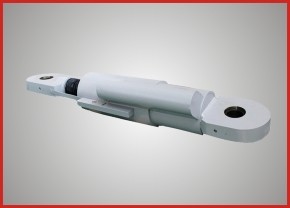Products & Services

Viscous Damper
![]()
A viscous damper is an energy-absorbing, vibration-absorbing device that utilizes a cylinder-like structure filled with silicone oil. The reciprocating motion of a piston drives the fluid flow, creating a damping effect. When temperature changes cause slow structural displacement, the silicone oil flows from one chamber of the cylinder to the other. At this point, the damping force is less than 10% of the maximum damping force, leaving the structure in a free state. When dynamic loads (such as earthquakes and wind loads ) induce sudden structural displacement, the piston and cylinder undergo relative motion. The silicone oil flows through specific pores in the piston, generating a damping force and dissipating the dynamic load energy as molecular heat, thereby protecting the structure. Conventional viscous dampers have an axial load rating of 100 kN to 15,000 kN, and designs for higher axial loads are available upon request. This product can be used in structures such as bridges and high-rise buildings, and can also be used in conjunction with tuned mass dampers.
The company's viscous damper has obtained the European EN15129 standard CE certification.
Typical cases of the company's viscous damper applications:
Lanzhou Hekou Yellow River Bridge, Xiangjiaba Ship Lift, Kunming Dongchuan Jindong Bridge, Chongqing-Guizhou Railway Baituojiang Bridge, Lanzhou Xigu Yellow River Bridge, Zhoushan Xiaogan Second Bridge, Wuzhong to Zhongwei Intercity Railway, Yinchuan Yellow River Bridge of Yinxi High-speed Railway, Humen Second Bridge, etc.

Consult
